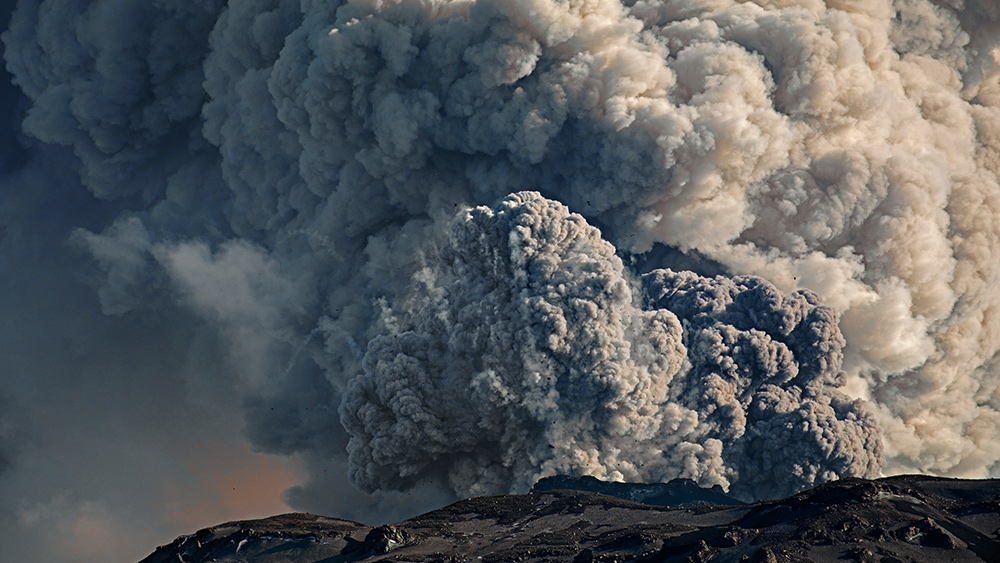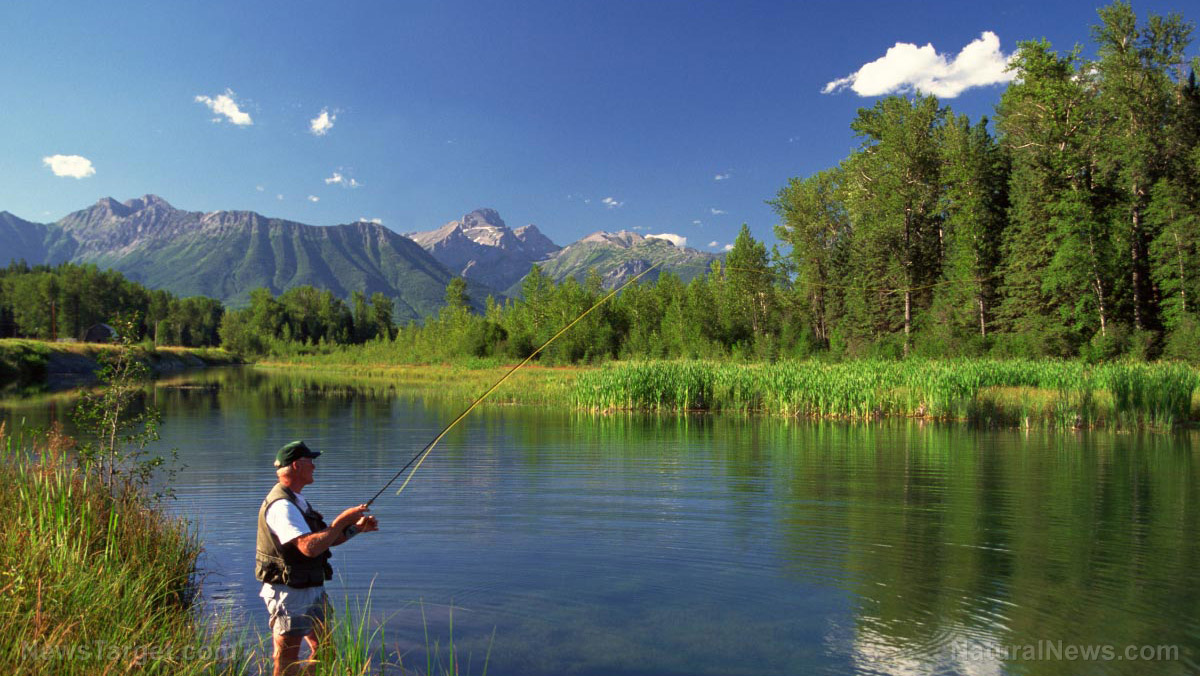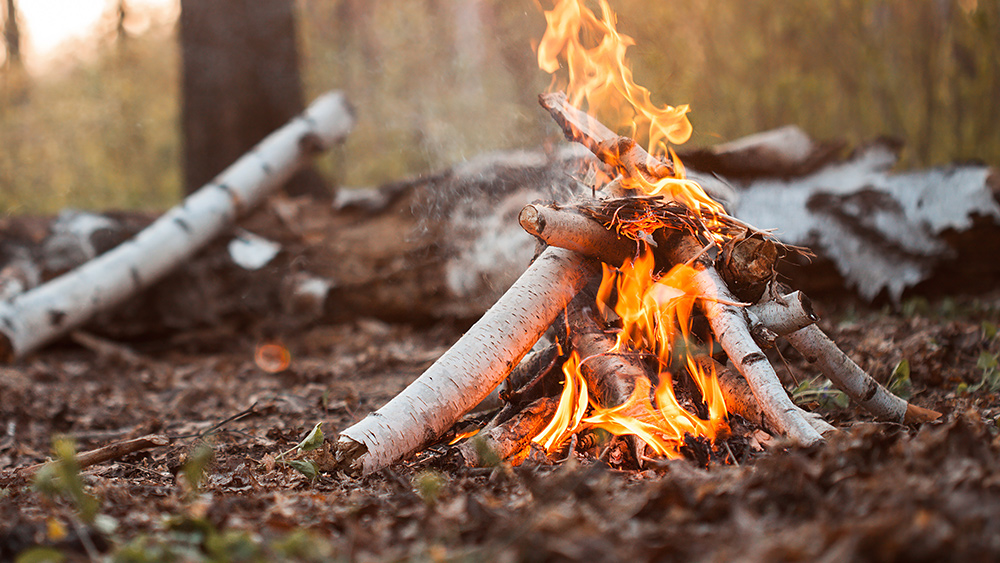Mexico preparing to evacuate millions of people due to Popocatepetl’s ongoing volcanic activity
05/24/2023 / By Arsenio Toledo

Mexican authorities are preparing to evacuate millions of people as the Popocatepetl volcano continues its eruption, spewing massive amounts of ash and rock in surrounding areas.
Popocatepetl, which means “smoking mountain” in the native Mexican Nahuatl language, is a nearly 18,000-feet high volcano with more than 1,000-foot-wide crater at its summit. It is Mexico’s largest active volcano and it crosses the borders of the central Mexican states of Puebla, Morelos and the State of Mexico. Approximately 25 million people live within a 60-mile radius of Popocatepetl, which is just 45 miles southeast of Mexico City and its more than nine million inhabitants. (Relates: Is volcanic sulfur dioxide causing global crop failures? Listen in as David DuByne explains the threat to the food supply.)
The volcano began erupting earlier this month after geological officials from both Mexico and the United States detected new and serious activity coming from it in mid-April.
Its latest activity, according to the Mexican National Center for the Prevention of Disasters (CENAPRED), was between 11 a.m. local time Sunday, May 21, to 11 a.m. local time Monday, May 22. During this 24-hour period, CENAPRED recorded nearly 1,400 minutes of high-frequency tremors, two moderate explosions and five bursts of water vapor, volcanic gases and ash.
CENAPRED on Sunday raised the alert level for the immediate area around Popocatepetl to phase 3, just shy of an evacuation order. Sergio Salomon, the governor of Puebla, said that roughly three million people who live in municipalities directly adjacent to the volcano have been told to stay alert and prepare for a possible evacuation.
Phase 3 of the volcanic activity alert system is part of the three-tiered “traffic light” alert system that informs residents of current eruption risk. One level higher is red, which would begin evacuations for the millions of people living adjacent to the volcano.
Popocatepetl spewing ash all over central Mexico
Popocatepetl was inactive for nearly 50 years before it erupted in 1994. Since then, it has been erupting regularly, with its last major activity before the current one occurring in December 2022.
Nicknamed “El Popo” by people who live in central Mexico, the volcano has been spewing enormous amounts of ash in the surrounding region since its recent series of volcanic activity.
“El Popo is always a presence. There’s usually smoke coming out,” said Joseph Sorrentino, a freelance photographer living in Chipilo, a city in Puebla less than 20 miles east of Popocatepetl’s summit. He added that he has seen varying degrees of black and gray ash fall over the city in the last couple of weeks, sometimes getting inside homes and buildings.
In an interview with the Wall Street Journal, the 67-year-old said he was very concerned about the volcano’s recent abnormal behavior. “The government is preparing evacuation routes, so it’s pretty serious.”
Mexico’s civil protection agency warned residents in cities affected by ashfall to protect themselves by covering their noses and mouths with face masks and wearing glasses and long-sleeved shirts and blouses when going outside to minimize contact. Authorities have also urged people to avoid exercising outdoors in the meantime.
The ashfall has been so severe in some parts of the country that it has caused major disruptions. Two airports serving Mexico City had to be shut down for several hours on Saturday, May 20, after so much ash accumulated on runways that airport authorities had to cease all operations just to clean it up. The National Aeronautics and Space Administration reported that the ash eruption that affected the airport reached as high as 4.5 miles and dropped up to 32 millimeters (1.25 inches) of ash on Mexico City.
Schools in at least 40 municipalities in Puebla, as well as several in Tlaxcala and the state of Mexico, shut down in-person instruction, reverting to remote learning to protect the health of children. All state parks in Puebla have also been shut down since Sunday.
While Mexicans wait for more news regarding Popocatepetl, Laura Velazquez Alzua of the civil protection agency said the government has already identified at least 42 evacuation routes in the states of Mexico, Morelos, Puebla and the nearby state of Tlaxcala, which would also be greatly affected by a major eruption. The federal government has urged municipal authorities in these areas to keep these routes free of obstacles as much as possible. Nearly 500 shelter sites have also been identified.
Learn more about natural disasters like volcanic eruptions, solar storms, earthquakes and floods at Disaster.news.
Watch this episode of “Evolutionary Energy Arts” as hosts Michael and Cindy Lazaro discuss how millions of people are being prepared to evacuate due to Popocatepetl’s ongoing volcanic activity.

This video is from the Evolutionary Energy Arts channel on Brighteon.com.
More related stories:
Temperature changes due to Tonga eruption will affect food production, warns David DuByne.
Study: Yellowstone supervolcano holds TWICE the magma previously believed.
Sources include:
Submit a correction >>
Tagged Under:
big government, chaos, Collapse, dangerous, environment, eruption, evacuation, Mexico, Mexico City, national security, natural disasters, panic, Popocatepetl, SHTF, volcanic ash, volcanic eruption, volcano
This article may contain statements that reflect the opinion of the author
Get independent news alerts on natural cures, food lab tests, cannabis medicine, science, robotics, drones, privacy and more from NewsTarget.com
Get independent news alerts on natural cures, food lab tests, cannabis medicine, science, robotics, drones, privacy and more from NewsTarget.com
RECENT NEWS & ARTICLES
COPYRIGHT © 2017 · SURVIVAL NEWS





















